Ag specialists predict that the 2017 strawberry crop in Maine, while late – blame April snows and a cold, wet spring – should amount to a pretty good one. Well, as long as it doesn’t get too hot and we get don’t get prolonged periods of wet weather, say farmers who know all too well that crop prediction is a tricky business.
I’ve been happily nibbling on quarts of early berries available at farmers markets but as we close in on peak picking season, it’s time to think about picking my own and preserving them for use later in the year.
But like Lois Bamford, co-owner of Maxwell’s Farm in Cape Elizabeth, this year I simply don’t have the time to turn the fruit into jam when they’re at peak flavor. She’s got a better excuse than I. I’m spending time with visiting friends and relatives, lolling on beaches, hiking trails and eating lobster rolls. She’s spending the season helping her family tend 12 acres of Wendy, Honeoye, Cavendish, Allstar and Valley Sunset strawberries. The Wendy’s were the first to ripen in the Maxwell Farm’s fields, the Valley Sunsets will be the last, sometime in August.
Bamford employs a variety of techniques to freeze all kinds of Maxwell’s Farm berries so she can use them when her schedule opens up. If she knows she’s going to make jam, she mashes and sugars them according to her favorite recipe before freezing the mixture so she can move right onto the cooking stage of that process when she takes it on in cooler September weather.
If she’s not sure what she’ll make with the berries, she freezes the fully ripe, but not at all mushy, berries whole. She washes, dries and hulls them, arranges them on trays lined with towels and freezes them until the berries are solid. At that point, she puts them in containers from which she can pull as many as she needs for a given recipe. Berries frozen this way should be used within two months. Bamford warns, though, that when thawed they will be slightly less sweet than they would have been if used straight from the field, so cooks should take that into account.
In “Food in Jars,” preserving expert, Marissa McClellan writes that she prefers to put the sugar in the mix before freezing strawberries, allowing their juices to develop and then freezing them in the sweet liquid. Given that McClellan recommends doing most things in jars, she freezes in the berries in glass ones as well, using a ratio of 1/2 cup sugar to every quart of washed, hulled and sliced (or quartered) berries. She combines the berries and sugar in a jar with at least an inch of head room, gives them a shake, and when the berries have settled, adds a few more to fill the jar, allowing for 2 inches of headroom now, so the berries have ample room to expand as they freeze. Berries frozen this way should be used within six months.
Sliced berries frozen in a simple syrup – 1 part sugar stirred into 4 parts simmering water until it is dissolved – will also keep in the freezer for up to six months and can be used in any recipe that called for commercial berries in syrup. The final way to freeze berries – ones that may be a bit overripe or bruised – is to puree them and freeze them in pint containers with an inch of headroom or in ice trays until the cubes are solid and can be stored together in a freezer-proof container for up to six months. These can be used in everything from smoothies, to sherbet (see recipe), to soufflés – whenever a burst of summer is required.
Christine Burns Rudalevige is a food writer, a recipe developer and tester and a cooking teacher in Brunswick, and the author of “Green Plate Special,” a new cookbook from Islandport Press based on these columns. She can be contacted at: cburns1227@gmail.com.

Christine Burns Rudalevige pours sugar into the strawberry puree and buttermilk mixture.
Strawberry-Buttermilk Sherbet
When I was growing up, sherbet was something you ate as the floating fuzz atop baby or bridal shower punch bowls. This one, I eat just by itself on hot summer days.
1 cup strawberry puree (from about 2 cups chopped strawberries)
1/3 cup sugar
11/2 cups buttermilk
Seeds scraped from 1 vanilla bean
1 tablespoon freshly squeezed lemon juice
Whisk all the ingredients together in a large measuring cup. Chill for 1 hour. Pour the mixture into the canister of an ice cream maker and freeze according to the manufacturer’s instructions. Transfer the sherbet to a covered container and store in the freezer until ready to use. Allow the sherbet to sit at room temperature for 10 minutes before attempting to scoop it.
If you don’t have an ice cream maker (or forgot to store the canister in the freezer, as I often do), freeze a large stainless steel bowl. Pour the mixture into the bowl and put it into the freezer for 30 minutes. Remove the bowl from the freezer and use a hand mixer to beat the sherbet. Repeat this process 3 or 4 times until the sherbet is firmly frozen, but smooth and creamy.
Send questions/comments to the editors.

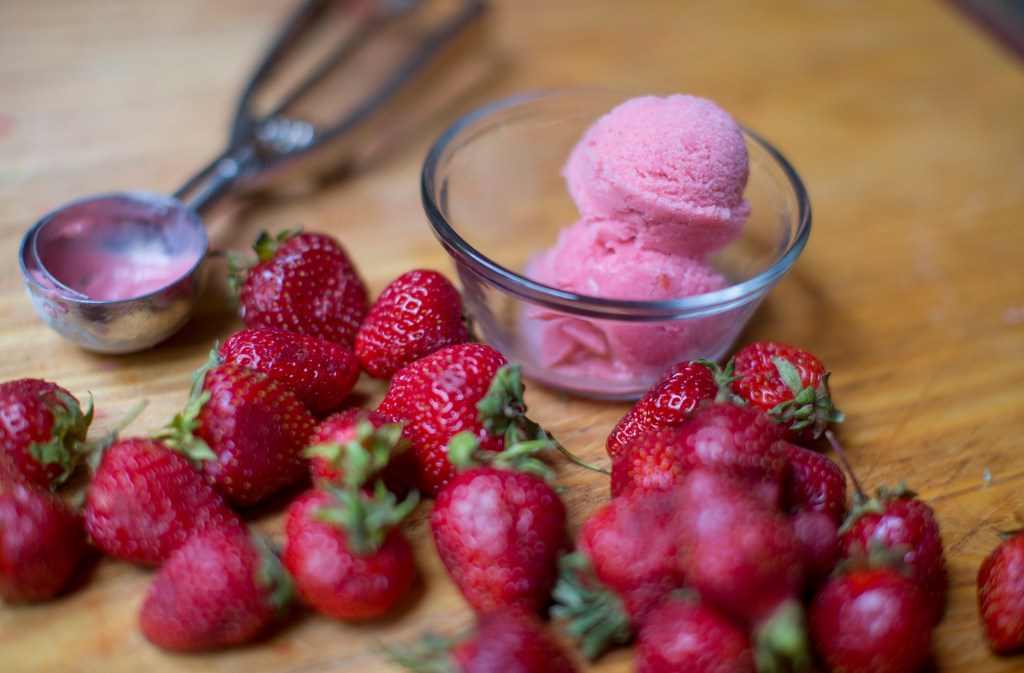
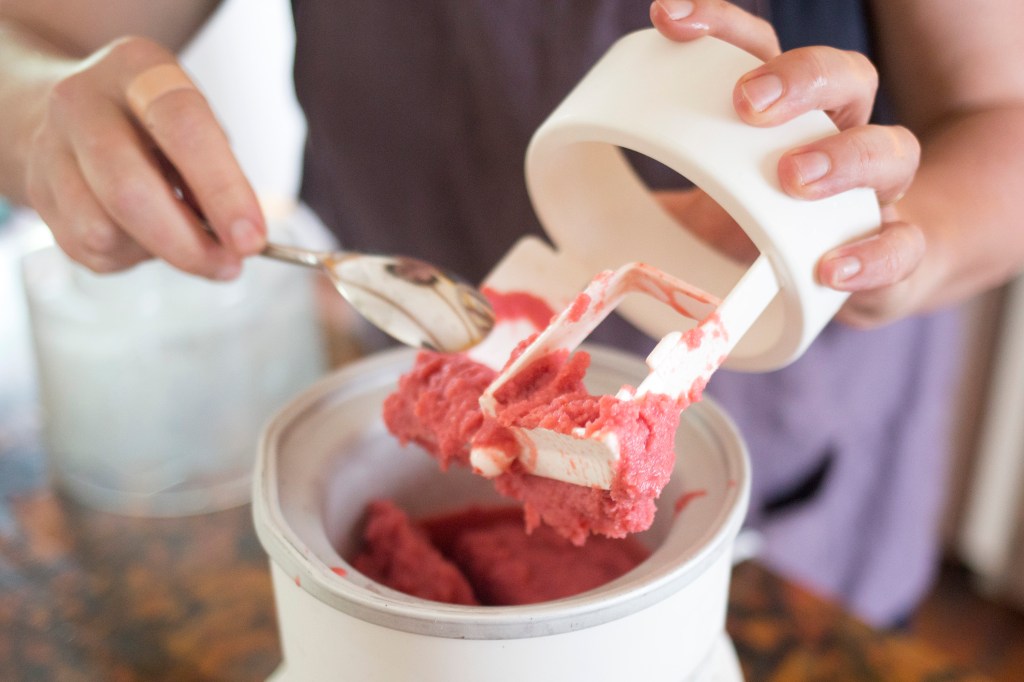
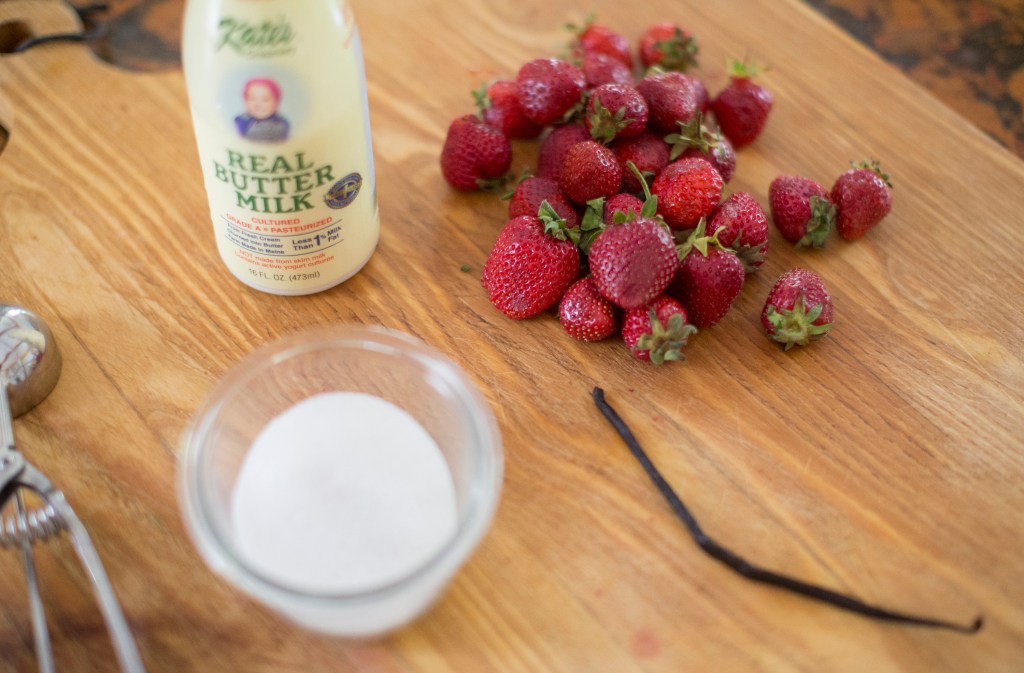
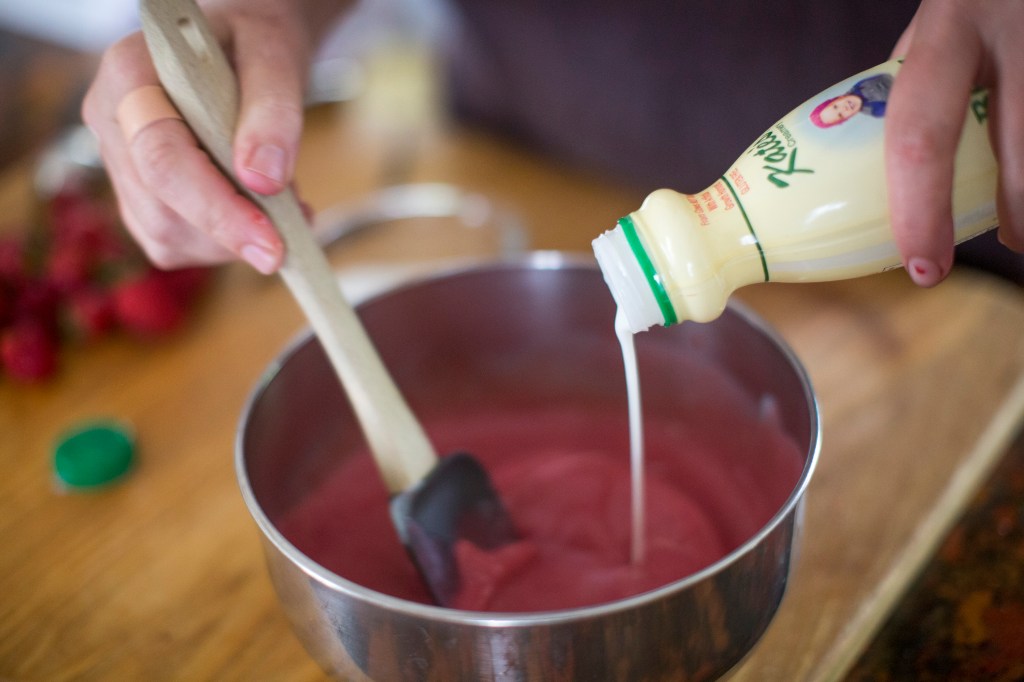
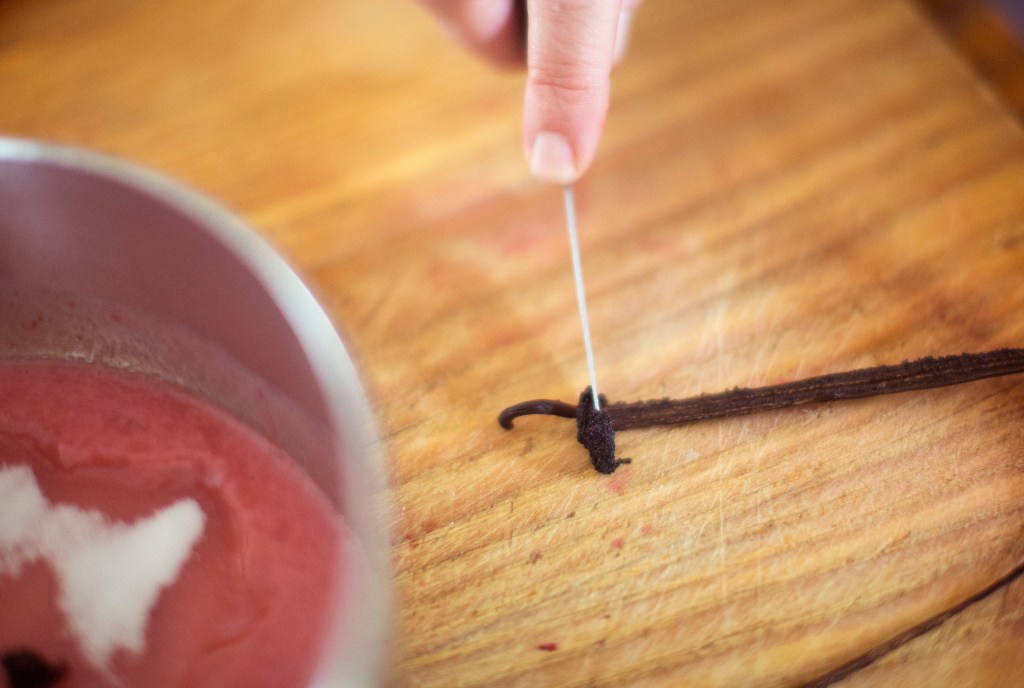
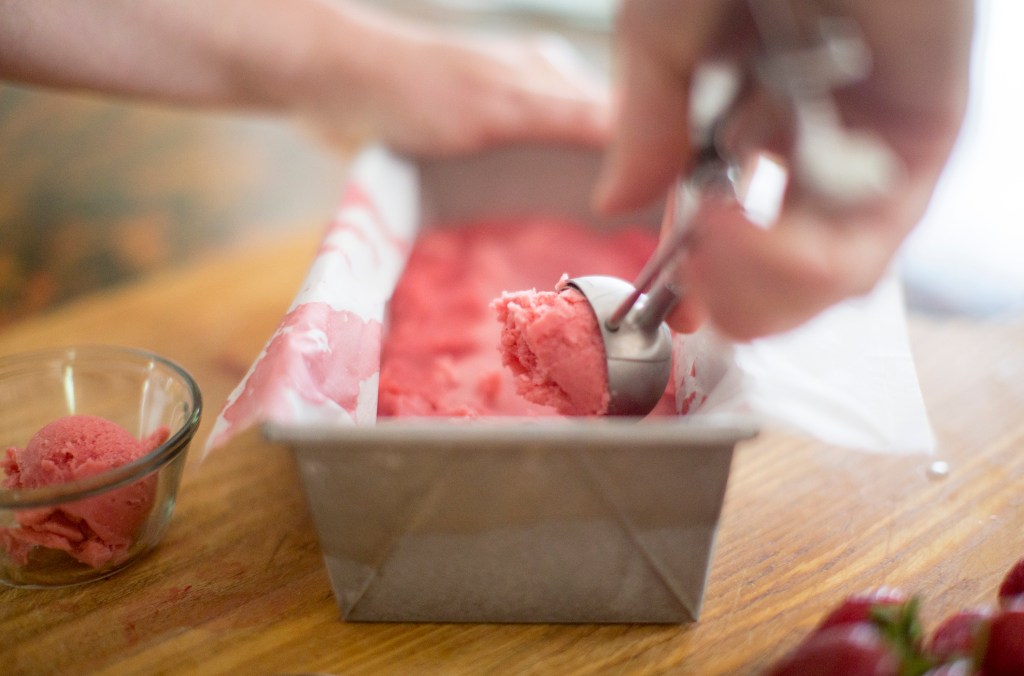
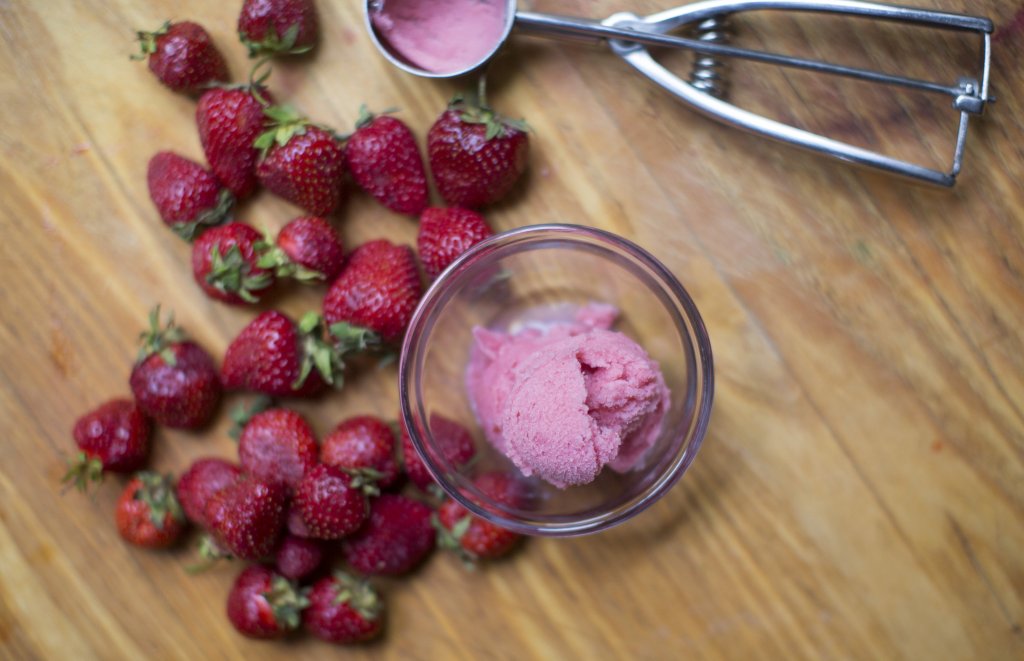

Comments are no longer available on this story